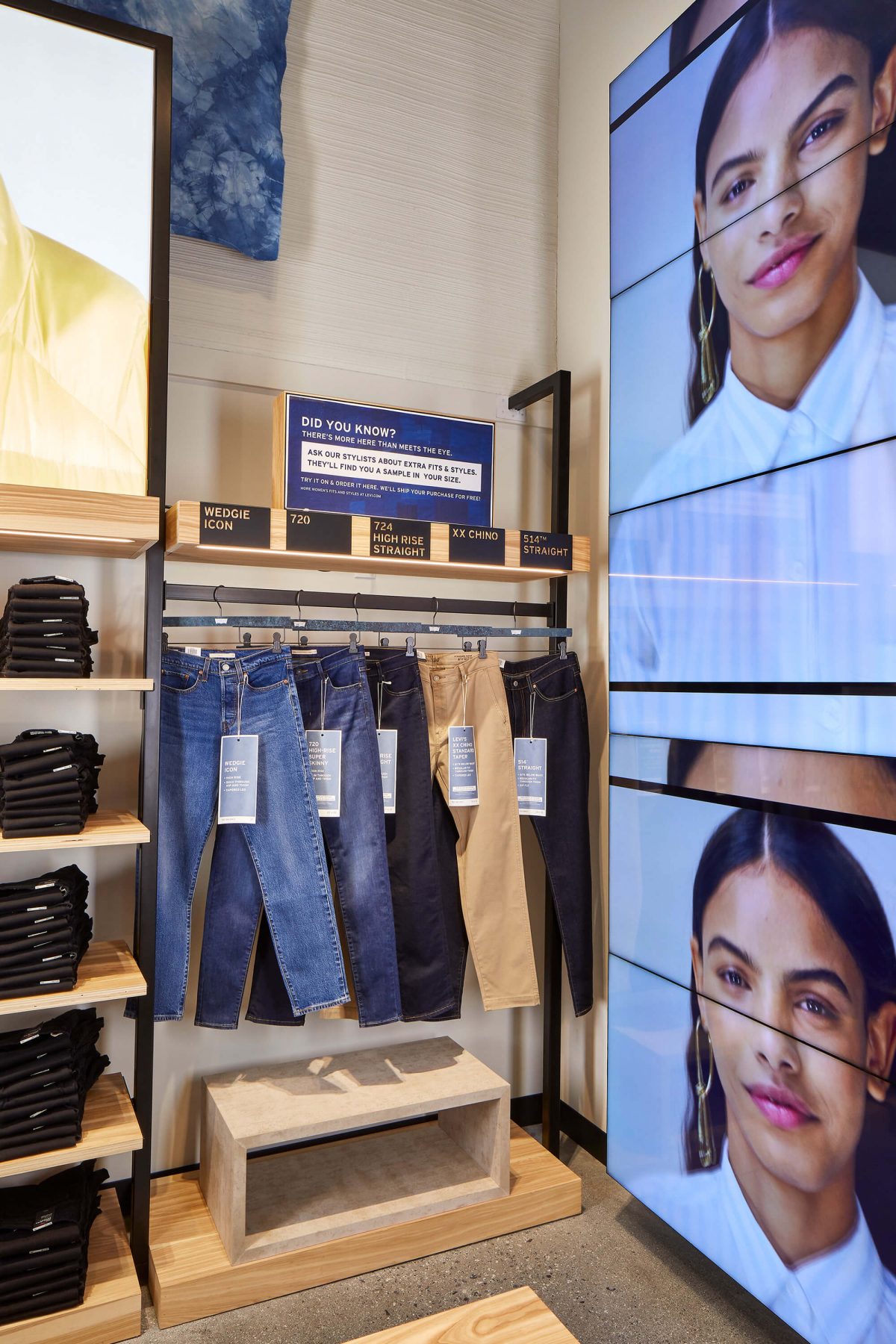Vogue Business gets an exclusive first look at the denim giant’s new fleet of ‘NextGen’ stores, where a digitally focused design prioritises fit and personalisation.
Store and curbside pick-ups, line-queuing tools, in-store personal shopping appointments and contactless returns: welcome to the new Levi’s experiential store.
After piloting the concept in Europe and Asia, Levi’s is bringing it to North America this week, as part of its retail shift to direct-to-consumer and away from wholesale.
Direct-to-consumer “lets us deepen our direct relationship with the consumer. [The new store] lets us show the consumer the full expression of the brand, and all the premium products that the brand can bring”, says Marc Rosen, executive vice president and president of Levi Strauss Americas.
Opening this week in Palo Alto, California, the 2,650-square-foot store offers an inventory assortment curated using local customer data, a tailoring service and larger fitting rooms, in addition to the digital in-store tools. The store will be crucial during the holiday season as retailers “face capacity constraints” among other challenges, he says.
The store upgrades are part of the company’s broader efforts to build up its direct retail business as wholesale becomes a less reliable and discount-driven channel. With over 3,000 stores and shop-in-shops including space in Kohl’s and Nordstrom, Levi’s was hit hard by Covid-19 closures and markdowns, reporting a loss of $364 million in the second quarter of 2020. Today, 48 per cent of sales are sold direct, versus 16 per cent 10 years ago, and e-commerce accounts for 8.5 per cent of revenues.
“You’re going to see more of these experiential stores as more companies start to go direct. It’s going to be a big trend over the next three to five years,” predicts Hilding Anderson, head of retail strategy for North America at Publicis Sapient, a digital consultancy. “Brands need to have a much more robust digital channel and a direct relationship with consumers because you can understand your customers better if you’re selling directly to them. The profitability is also better, and you need that profitability to make a great product.”
Changes to the store experience — including bigger fitting rooms, inventory specifically chosen for customers in that specific neighbourhood, pre-selected by AI and customer data and the incorporation of the Levi’s mobile app — reflect what Rosen considers to be the new role of the store. “It’s about experience and inspiration, but it’s also about helping the consumer find the right fit and offering super convenient services that get the customer in and out of there most efficiently.”
Levi’s plans to open about 100 more NextGen stores across the US over the next few years, in addition to its existing 30 regular mainline stores and 170 outlet stores. The next location, in Austin, Texas, will open in a few months. Its strategy echoes Nike’s, which has invested in direct-to-consumer retail and full-price sales through its House of Innovation retail stores.
“For the first time in modern history, the consumer will shop how they want to shop, which isn’t just e-commerce or going to a store anymore, but they want it in five or six different ways, whether they want an item brought to their house or they want to order online but pick it up in a store,” says Lee Peterson, executive vice president of thought leadership and marketing at retail strategy firm WD Partners. A recent WD Partners survey of 2,200 US customers found that good service, easy checkout and great store design and navigation were the most important factors for a good retail experience.
“These are the kinds of things that every retailer has to offer now,” he says.

